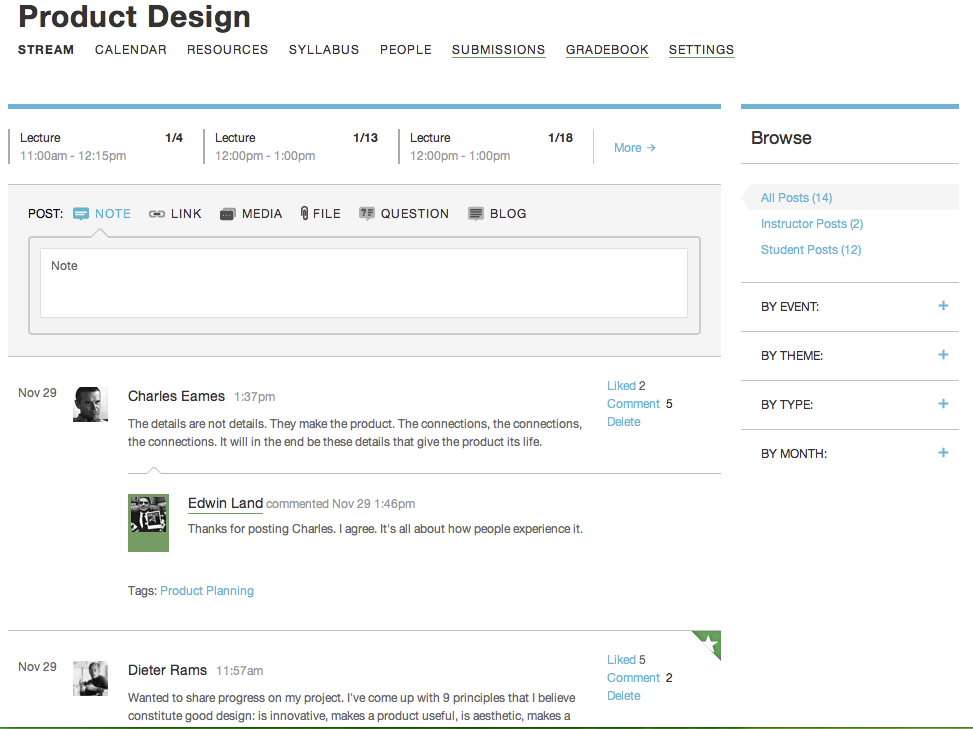Here’s a way to streamline an online course. Coursekit brings the learning management system [LMS] directly to the instructor and student-i.e. The Users-all for free. The experience is focused on simple and elegant and includes the basics: a calender, file sharing, submitting assignments, and grading work. One noticeable difference, compared to other LMS interfaces, is how Coursekit brings the user directly into ‘the classroom’ and not to the typical dashboard…which makes it more like a real classroom experience.
Just as a student would walk into a physical classroom, online students first appear in The Stream of the your online classroom and it has the feel of Facebook. Unlike Facebook, within The Stream, students can upload; text, images, video, and audio. Each element in The Stream brings up a side panel when you click on it. As Coursekit’s creator Joseph Cohen explains, “The result is that it turns short stuff into long stuff.” This allows the ability to have a space to discuss in length and works much like a Twitter feed.
As for textbooks, Coursekit is pursuing an online free system for textbooks as well. “The textbooks of the future will not be textbooks,” Cohen says. But there will be a need for educational content, and much of that will be bought (remember, direct-to-instructor is already at the heart of that businesses). If all goes well, Coursekit is the seed of the storefront of the future for educational products, with a ready-made group of customers who are already logging in. All this might look something like Inkling.
In my humble opinion, it is all driving towards a more personalized experience for learning and it’s all quite exciting.

